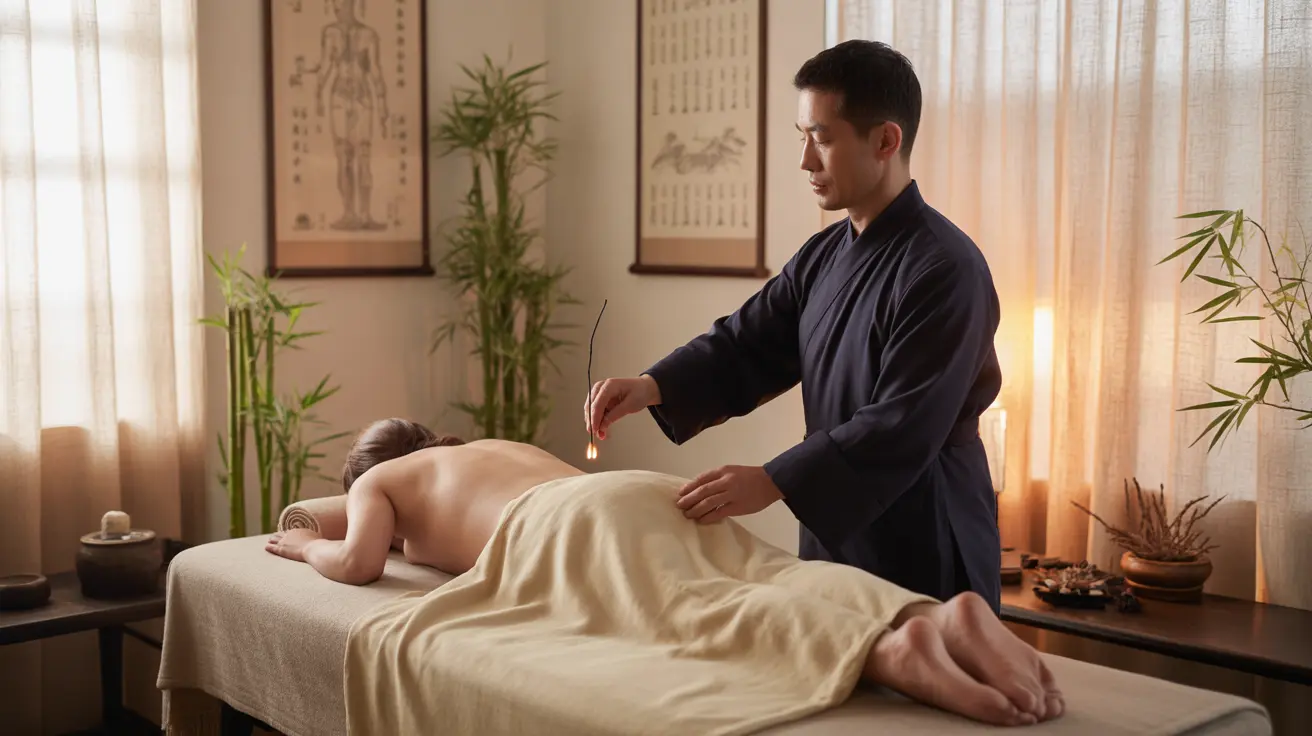Moxibustion is an ancient healing technique that has been used in traditional Chinese medicine for thousands of years. This therapeutic practice involves burning dried mugwort (artemisia vulgaris) to stimulate specific acupuncture points and meridians in the body. As interest in complementary therapies grows, more people are exploring moxibustion for its potential health benefits and therapeutic applications.
While less widely known than acupuncture in Western countries, moxibustion is often used alongside acupuncture treatments and has gained attention for its various therapeutic applications, particularly in managing chronic conditions and supporting reproductive health.
Types of Moxibustion Treatment
There are two primary methods of moxibustion therapy, each with its own specific applications and safety considerations:
Direct Moxibustion
In direct moxibustion, small cones of dried mugwort are placed directly on the skin at specific acupuncture points. This method comes in two forms: scarring and non-scarring. Scarring moxibustion, where the moxa burns directly on the skin, is rarely used in modern practice due to the risk of burns. Non-scarring moxibustion involves removing the cone before it burns the skin.
Indirect Moxibustion
Indirect moxibustion is the more commonly practiced method today. It involves holding the burning moxa close to but not touching the skin, or using various barriers such as salt, garlic, or ginger slices between the moxa and the skin. Some practitioners also use moxa sticks, which are held about an inch from the skin's surface.
Health Benefits and Applications
Traditional Chinese medicine practitioners use moxibustion for various therapeutic purposes:
- Pain management and arthritis relief
- Digestive system support
- Immune system strengthening
- Reproductive health enhancement
- Energy level improvement
- Breech presentation correction during pregnancy
Research suggests that moxibustion may be particularly effective when combined with acupuncture, especially for certain chronic conditions and pain management scenarios.
Safety Considerations and Best Practices
While moxibustion can offer therapeutic benefits, proper safety measures are essential:
- Always seek treatment from a qualified practitioner
- Ensure proper ventilation during treatment
- Communicate any discomfort immediately
- Avoid treatment if you have fever or acute inflammation
- Follow practitioner guidelines for post-treatment care
Frequently Asked Questions
What conditions can moxibustion help treat and what are its main health benefits?
Moxibustion can help treat various conditions including chronic pain, arthritis, digestive disorders, and menstrual issues. Its main health benefits include improved circulation, reduced inflammation, enhanced immune function, and better energy flow through the body's meridians.
How is moxibustion safely performed and what precautions should I take to avoid burns or other side effects?
Moxibustion should only be performed by trained practitioners who understand proper technique and safety protocols. Patients should ensure good ventilation, communicate any discomfort, and follow all practitioner instructions. Indirect moxibustion is generally safer and recommended for most applications.
Can moxibustion be used to help turn a breech baby during pregnancy and is it safe for pregnant women?
Studies have shown that moxibustion can be effective in turning breech babies when applied at specific acupuncture points, particularly point BL67. When performed by qualified practitioners, it is generally considered safe during pregnancy, but should only be done under professional supervision.
What are the potential risks or side effects of moxibustion therapy?
Potential risks include burns, skin irritation, and respiratory irritation from smoke. Some people may experience temporary redness or blistering. Those with respiratory conditions should exercise caution and discuss alternatives with their healthcare provider.
How does indirect moxibustion differ from direct moxibustion and which method is safer?
Indirect moxibustion involves holding the burning moxa near the skin or using barriers, while direct moxibustion places the moxa directly on the skin. Indirect moxibustion is generally considered safer as it significantly reduces the risk of burns while still providing therapeutic benefits.




